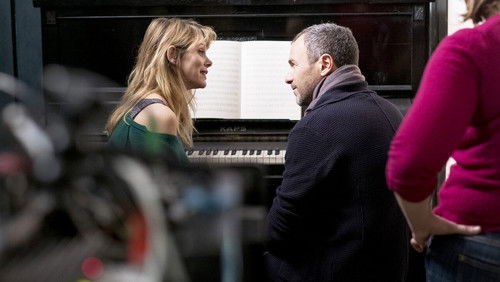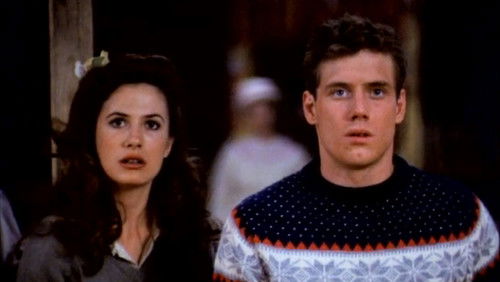Meandre (1966)
19KMeandre (1966). 1h 29m
“I was 14 years old in 1967, when Mircea Saucanu0026#39;s film u0026#39;Meandreu0026#39; (which had been filmed in 1966) was shown on Romanian screens for a short time, before being withdrawn and buried in the archives until the fall of communism in 1989. I didnu0026#39;t get to see then this film which has the illustrious glory of having been banned from being distributed in Romania or exported outside the country shortly after production, along with Pintilieu0026#39;s u0026#39;Reconstituireau0026#39; and one or two other films made between 1965 and 1969, becoming u0026#39;negative examplesu0026#39; in cultural policy meetings aimed at making cinema a propaganda tool of the regime. In this way, some of the young and talented directors of the time were cut off and denied the opportunity to create quality cinema, and the history of Romanian film lost the opportunity to create a solid film school, as it happened in other communist countries like Poland, Czechoslovakia and even the Soviet Union. It would be over three decades before the appearance of the New Romanian Wave. I had the opportunity to see and appreciate Saucanu0026#39;s film recently and I tried to understand what scared the communist censors of the u0026#39;60s.u003cbr/u003eu003cbr/u003enReconstructed from flashbacks alternating with present time scenes, the story (based on the screenplay by Horia Lovinescu) is structured nonlinearly. u0026#39;Meandreu0026#39; is the story of a love triangle. Anda (Margareta Pogonat) is a beautiful and elegant woman, whose life and feelings are shared between her husband, Constantin (Ernest Maftei), a successful and influential architect, and Petru (Mihai Paladescu), her former lover she never forgot, whose career was destroyed by Constantine, perhaps because of their rivalry. Gelu (Dan Nutu), the son of Anda and Constantin, a young man at the age of self-searching and rebellion, sees in Petru a model and a mentor. The reunion after years between Anda and Petru leads not only to memories and re-evaluations of their romantic relationship but also to unexpected revelations related to the causes of their separation in the past.u003cbr/u003eu003cbr/u003enIt is obvious that director Mircea Saucan was more interested in the way he tells the story than in the story itself which, although interestingly written, fails to involve the viewers. u0026#39;Meandreu0026#39; is a film by a director who had obviously seen many of the major films of the French New Wave and of other film schools in the first half of the 1960s, a modern film (both then and today) that does not mimic but creatively combines the most interesting cinematic techniques of the art of film of those years. The narrative structure and futuristic scenography (using as a pretext the herou0026#39;s profession as an architect) has something of Godard and Robbe-Grilletu0026#39;s experiments while the repeated sequences and the way the soundtrack creates a space parallel to the image quotes Resnais. However, these ideas are not copied but smartly processed and amplified. Tiberiu Olahu0026#39;s music is at first dissonant, then includes pop quotes (u0026#39;House of the Rising Sunu0026#39;) and free jazz (in 1966!), to end in harmonic tones towards the end. The cinematography (by Gheorghe Viorel Todan) often uses the mobile camera constructing aesthetic framing with bold angles, and even the very poor quality of the filming material gives the movie (intentionally or not) a feeling of journalistic realism.u003cbr/u003eu003cbr/u003eWhat bothered the censors? Maybe the fact that the film does not align in any way with the propaganda line of the films of the time? We see a love story and some characters concerned with their personal problems and not with the construction of socialism. The action could take place anywhere in the world where people love and separate, betray and aspire to a different life. A few lines include allusions to social limitations (the excellent scene that opens the film) but no open criticism of the system. A scene filmed in a church could have been interpreted mystically or in protest, although in 1966 the demolition of the churches in Bucharest had not yet begun. Despite the presence of very talented actors such as the fascinating Margareta Pogonat or the very young at the time Dan Nutu, the characters and their story fail to win the empathy of the spectators. This is however a feeling I have when watching many of the films of the New French Wave, for example – the formal dominates the emotion. Unfortunately, u0026#39;Meandreu0026#39; did not have the chance to be continued by other films that would have opened, perhaps, another direction of evolution of Romanian cinema in the u0026#39;60s.”









